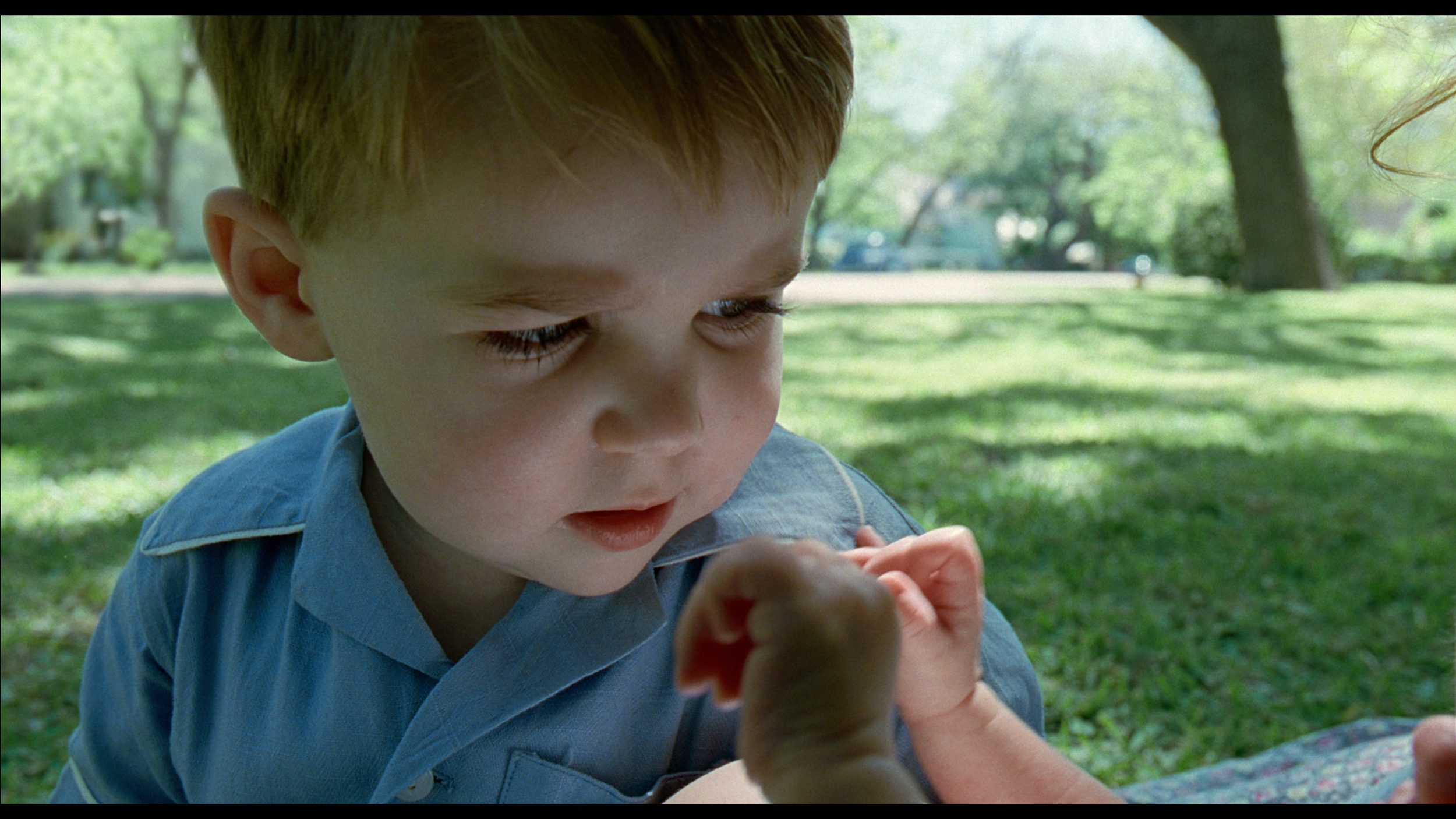- Matching (Score)
- Our verdict
- Competing TVs
- TV appearance
- Where to buy
- Contrast and black detail
- HDR effect quality
- Factory color reproduction
- Color reproduction after calibration
- Smoothness of tonal transitions
- Image scaling and smoothness of tonal transitions
- Blur and motion smoothness
- Console compatibility and gaming features
- Input lag
- Compatibility with PC
- Viewing angles
- TV efficiency during daytime
- TV features
- Apps
- Playing files from USB
- Sound
- Details about the matrix
Panasonic Z95B Review
Available screen sizes:
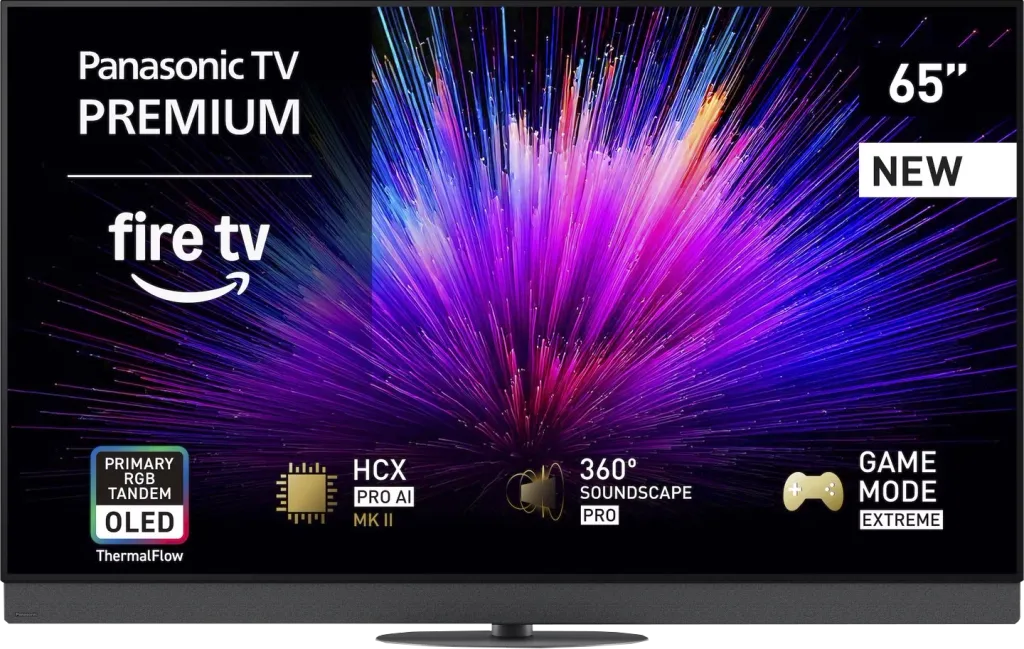
Complete the survey to find out the result
Panel type: WRGB OLED Refresh rate: 144Hz Brand: PANASONIC Resolution: 3840x2160 System: Amazon FireTV Model year: 2025
“Return of the King”, “The Legend Returns” – this is how the premiere of the Panasonic Z95B was described in international reviews. It's no surprise, as the Japanese manufacturer has long been regarded as a legend in the world of televisions. The new flagship model uses the latest tandem OLED panel from LG Display, the same one found in the LG G5, Philips OLED910, or 83-inch Samsung S95F. The question is whether Panasonic can extract even more from it and prove that it still creates the best screens in the world? Equally interesting is how the smart features will perform, as the brand had the most to catch up in this area. We’ve checked this for you, as always, in our review. Enjoy reading!
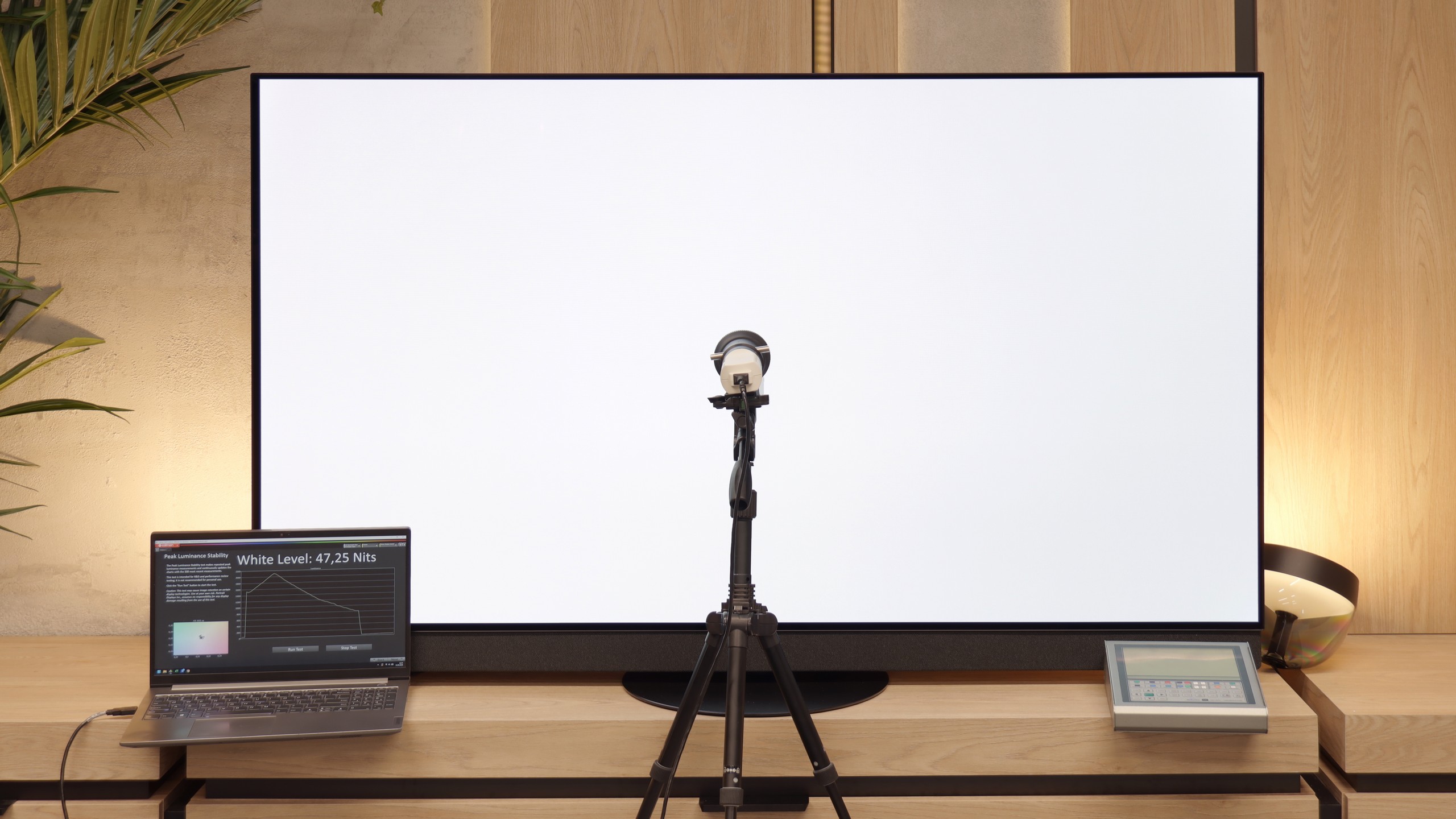
PANASONIC Z95B - Our verdict
8.5
Overall rating
The Panasonic Z95B is a piece of equipment that makes it hard not to raise your eyebrows in delight. From the very first moments, it's clear that we are dealing with an absolutely exceptional screen, capable of bringing out everything that’s best in films and games. The black levels are perfect, brightness in HDR is stunning, and the colours – whether in film mode or games – show that Panasonic's factory calibration has reached a level that other manufacturers can only aspire to. Adding to this are the fantastic sound from the built-in soundbar and excellent viewing angles, giving us a television picture that, in terms of image quality and audio-visual immersion, seems to be complete. However, the longer we used it, the more it seemed we were dealing with a split device. On one hand, it acts like a reference monitor, ideal for evaluating video materials and indulging in the pure pleasure of films or series, even gaming; on the other hand, it is a television that can disappoint in its everyday functionality. FireTV in its current version can be frustrating, there are significantly fewer applications than the competition, some simply do not install at all, and the system can stutter quite a bit. Additionally, there are strange system issues, such as the lack of support for basic subtitles in films from USB – these may seem like trifles, but they contribute to the picture of a device that, in daily use, is far from perfect. And here lies the greatest paradox of the Z95B. It is a television that probably offers one of the best images currently available in showrooms, and at the same time, one that is difficult to recommend as a typical "television" without reservations. The competition, although often visually slightly weaker, is simply more user-friendly and costs significantly less. Therefore, the Z95B is a proposition for image purists, for those seeking a reference screen and who are willing to accept all the compromises associated with the other non-functioning features. For them, it will be a dream device. For the rest – a demonstration of Panasonic's power and rather a form of curiosity.
Advantages
Amazing black
Incredible brightness - over 2000 nits in HDR
Factory colours almost reference-level
Support for multiple HDR formats including Dolby Vision and HDR10+
Phenomenal motion smoothness - OLED panel, 144Hz
Great choice for gamers, HDMI 2.1, VRR, ALLM, Dolby Vision Gaming and HGiG
Good compatibility with PC - 144 Hz, G-Sync and FreeSync
Very good sound from the built-in soundbar
Decent viewing angles
Disadvantages
Fire TV – no app, strange errors, untranslated menu
No support for DTS:X
No option to enable external subtitles from USB memory
Only two HDMI 2.1 ports, which is definitely too few in this class
Price clearly higher than the competition, which often lacks such system issues
Movies and series in UHD quality
9.0
Classic TV, YouTube
8.8
Sports broadcasts (TV and apps)
8.5
Gaming on console
9.6
TV as a computer monitor
8.6
Watching in bright light
7.4
Utility functions
6.8
Apps
7.2
Sound quality
8.9
Complete the survey to find out what fits your preferences
PANASONIC Z95B - Competing TVs in this price range
PANASONIC Z95B - TV appearance
HDMI inputs: 2 x HDMI 2.0, 2 x HDMI 2.1 (48Gbps) Outputs: Toslink (Optical audio), eARC (HDMI), ARC (HDMI), Mini-Jack (Headphones) Network Interfaces: Wi-Fi 2.4GHz, Wi-Fi 5GHz, Ethernet (LAN) 100Mbps
Build quality: Super Premium
Stand type: Central
Bezel colour: Graphite
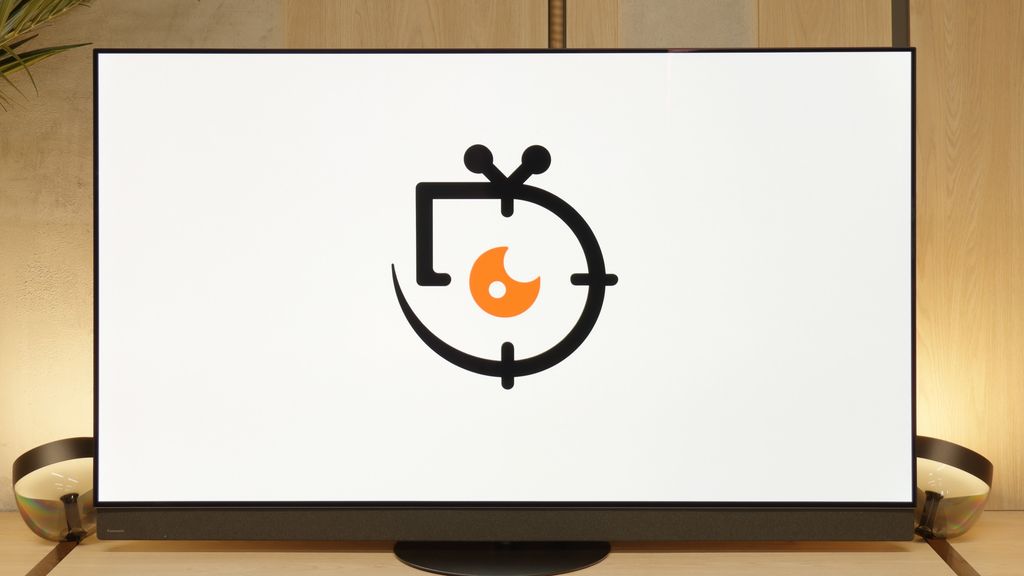
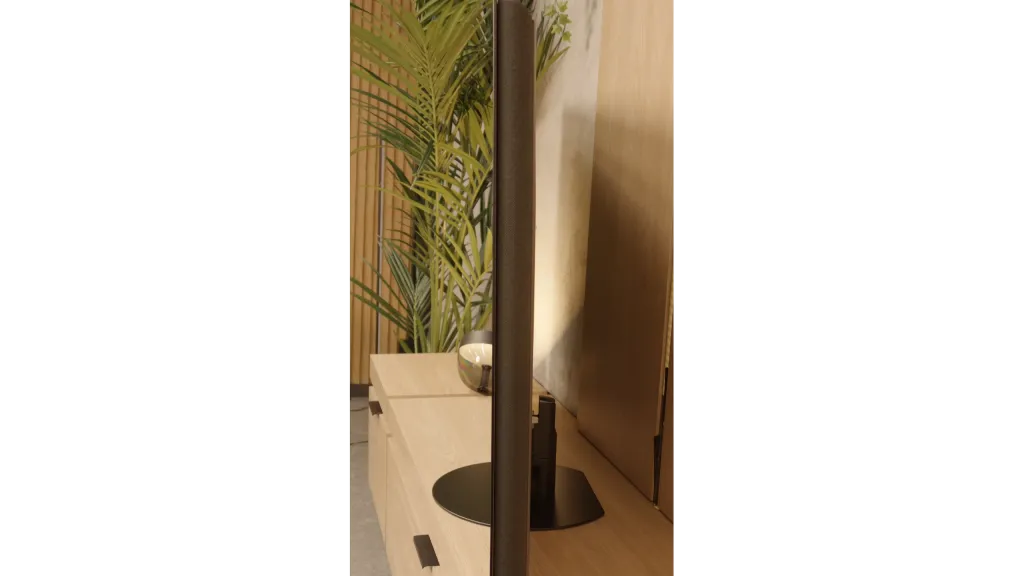
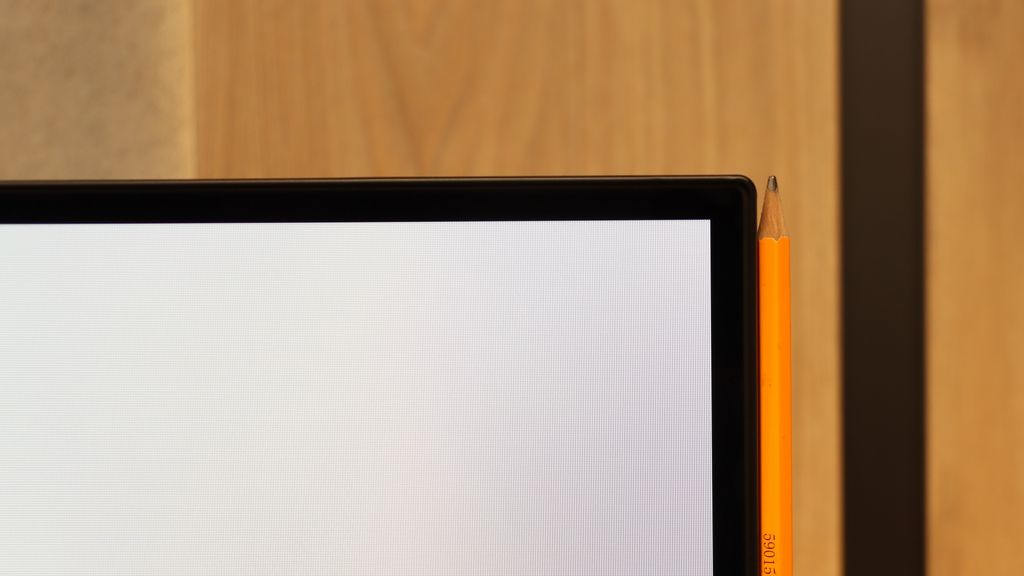
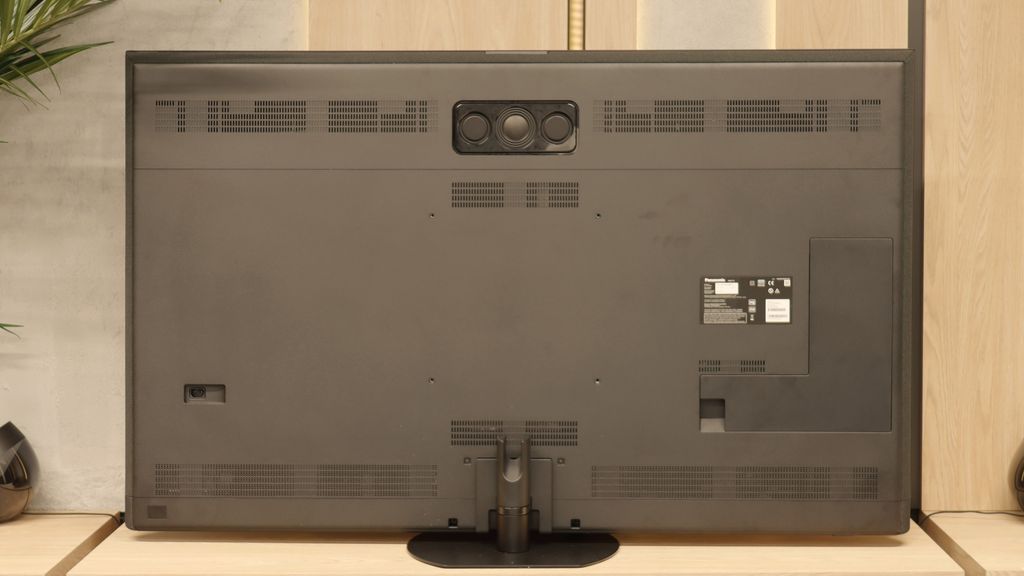
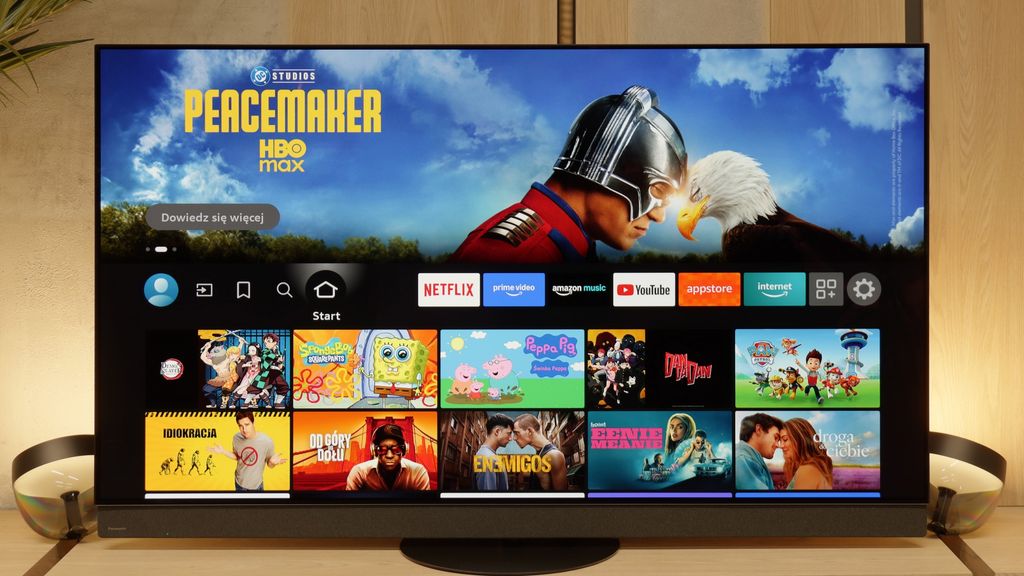
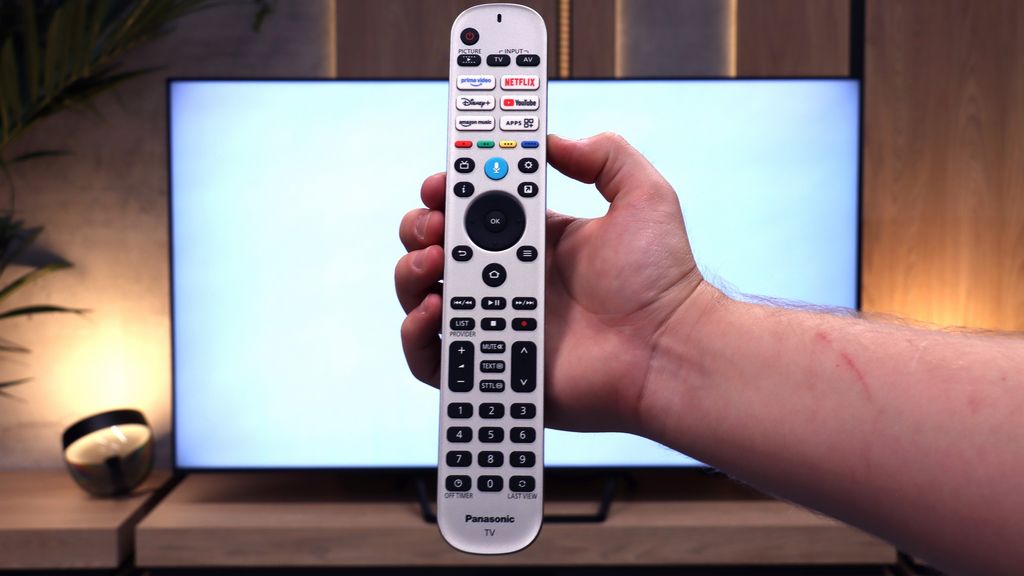
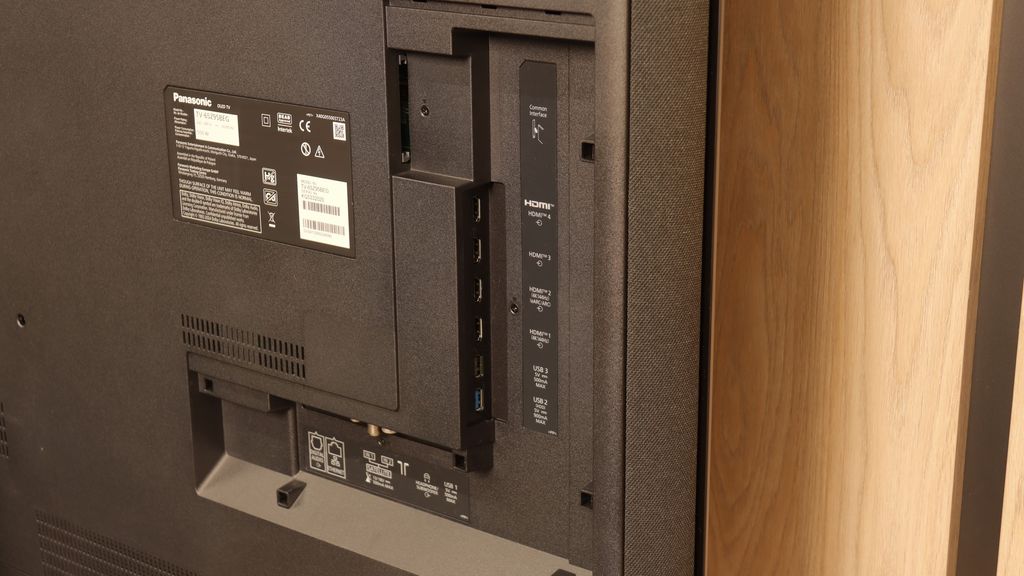
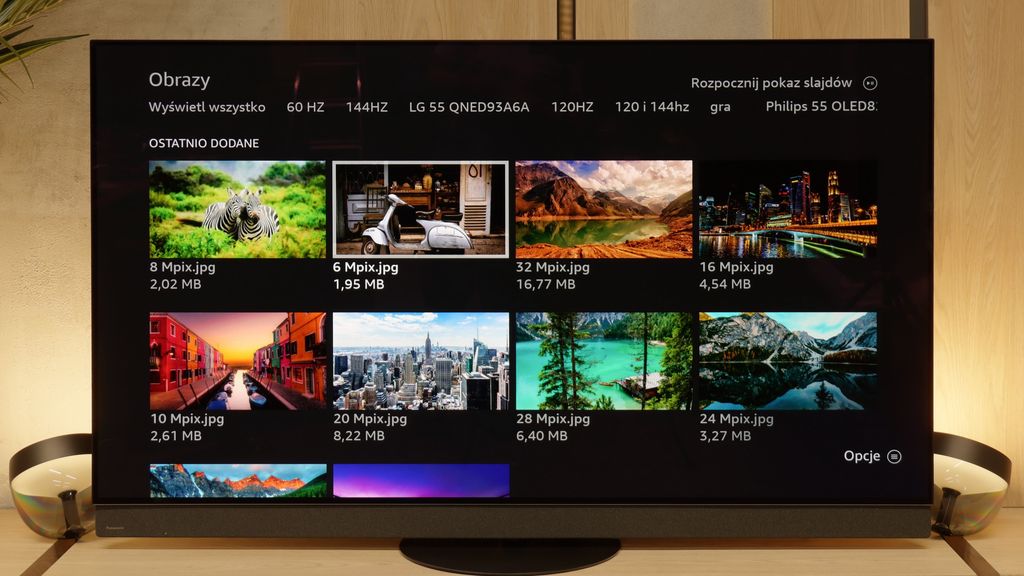
Stand: Swivel
Flat design: Yes
Accessories: Stand
The Panasonic Z95B makes a strong impression from the very first glance, indicating that we are dealing with a flagship product, although it does not try to pretend to be an ultra-thin device like many competitors. This television is bulkier, which is particularly noticeable from the side, but such a design is not accidental – Panasonic engineers deliberately opted for a thicker casing to accommodate the cooling system for the panel. This solution is crucial for maintaining stable brightness because, according to the manufacturer, the panel can operate at full power for a longer time than in competing models. The second characteristic feature of the design is the built-in soundbar, which extends not only across the bottom of the casing but also along its sides. Finished in a material resembling denim, it gives the device an unusual yet elegant character and makes the television look solid and modern. The impression is further enhanced by the fact that the speakers are arranged along the entire length of the panel, which raises hopes for fuller sound than in standard constructions. The single, rotating stand also deserves attention. Although OLEDs are known for very good viewing angles, Panasonic recognised that the ability to easily adjust the screen's position still makes sense. This is a small detail, but it proves practical in everyday use. The Z95B is a top-class device that competes not on slimness but through distinctive and functional design. It is hard to pass by such a television without noticing it.
Buy in the best price
Select size:
PANASONIC Z95B - Contrast and black detail
10/10

Result
∞:1

Result
∞:1

Result
∞:1

Result
∞:1

Result
∞:1
Visibility of details in the lights:
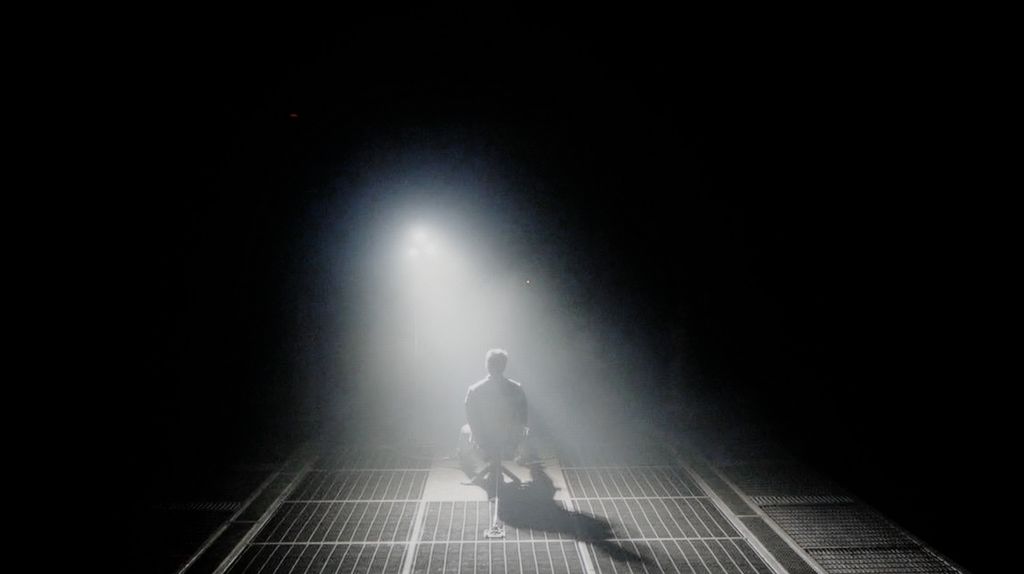
The black levels and contrast of the Panasonic Z95B can be summed up in one word – perfection. As is the case with any OLED television, the panel's ability to control individual pixels allows for complete dimming of sections of the image, resulting in absolute black. This enables the Z95B to offer ideal separation between bright and dark elements in a scene, with no visible blooming, lightening, or halo effects on the screen. Even in the most demanding sequences, where other LCD televisions reveal their limitations, the image here remains clear and readable. In practice, it is hard to imagine that OLEDs in this category could improve further, as the technology of self-dimming pixels simply has no weaknesses regarding contrast. The Panasonic Z95B does not deviate from this pattern and demonstrates that there is no room for significant improvements in terms of black levels – it sets a reference standard that is difficult to surpass.
PANASONIC Z95B - HDR effect quality
8.7/10
Supported formats: HDR10, HDR10+, Dolby Vision, Dolby Vision IQ, HLG Color gamut coverage: DCI P3: 99.8%, Bt.2020: 81.3%
Luminance measurements in HDR:

Result
2069 nit

Result
2118 nit

Result
2131 nit

Result
2114 nit

Result
1442 nit
The quality of HDR on the Panasonic Z95B is among the absolute best. Thanks to the latest generation panel, referred to by the manufacturer as Primary RGB Tandem OLED, the television can achieve over 2000 nits of brightness in cinematic scenes. The effect is impressive and can amaze with the intensity of the light, providing a sense of connection with the screen that goes beyond previous experiences. Similar feelings accompanied us only during tests of the LG G5, Samsung S95F, or Philips OLED910. Of course, there are moments when the device's algorithms decide to limit luminance – this especially concerns full-screen bright sequences, such as the closing credits in the film The Meg. Even then, the Z95B maintains a level of around 1500 nits, which is still an incredibly impressive result. One can thus say that HDR in this model has reached masterful form. A significant step forward is also evident in colour reproduction. The new tandem OLED panel does not yet match the best QD-OLED screens in terms of full gamut coverage, but the gap between these solutions has significantly decreased. When watching films, the differences are subtle enough that under normal conditions they are hard to notice, and the colours remain vivid and saturated.
Scene from the movie “Pan” (about 2800 nits)

Scene from the movie “Billy Lynn” (about 1100 nits)

Measurements are one thing, but the way the Z95B looks in a real viewing scenario makes a much greater impression than just the numbers. Among the other screens we have tested, this television delivers an image of absolutely the highest quality. We can confidently say that this is one of the best, if not the best image we have seen to date. The HDR effects are rendered with incredible precision, the details in white are not blown out at all, and no details are lost in the blacks.
A huge credit not only goes to the tandem OLED panel, but also to how Panasonic manages its capabilities. The dynamic tone mapping feature (HDR Tone Map) in "dynamic" mode does a great job by enhancing only the highlights, which are the brightest points of the image. The effect is such that it feels as if the screen is shooting rays of light at the viewer. Kudos to Panasonic, because in terms of image quality, we are dealing with a screen that really sets the standards in 2025.
HDR luminance chart:
HDR luminance
Luminance of RGB colors
HDR10 on the Panasonic Z95B looks truly excellent. Thanks to the very high brightness of the panel and well-functioning dynamic tone mapping, there's no need to worry that watching a film in this static standard will yield something inferior. The image is detailed, contrast remains at an outstanding level and there is no sense that something is lost in the whites or blacks. Of course, as with any television, you can see a bit more detail in Dolby Vision or HDR10+, especially in challenging super-bright scenes. However, there is not the same gulf as in other models, and one can comfortably say that even standard HDR10 on the Z95B delivers a very attractive effect. Fortunately, Panasonic does not get involved in any format wars and supports everything – we have both Dolby Vision and HDR10+. This is important, as regardless of which streaming platform you use, you can be sure that the television will display the material in the best possible quality.
Static HDR10

Dynamic: Dolby Vision

Factory color reproduction
9.5/10
The factory colour reproduction of the Filmmaker mode, my dear friends, is truly remarkable in the case of the Panasonic Z95B. I'm referring to our test sample, but the result was so good that it’s hard to believe. The only detail one might nitpick about is a slight lack of blue in the white balance, but apart from that, the television straight out of the box presented an image unlike anything we have ever seen in factory mode. Tests of the colour palette, Color Checker – everything indicated values below Delta 2. That’s a much lower result than the threshold of human eye perception, which means, quite simply, that the viewer has no chance of noticing any serious deviations. It looks as though Panasonic has actually calibrated this model at the factory stage. Of course, we cannot rule out the possibility that we received an exceptionally well-set sample, but the result is still impressive. We are very strict when it comes to evaluating factory calibration, and here our jaws simply dropped.
Color reproduction after calibration
9.8/10
The colour representation after calibration in the Z95B is a topic that is difficult to elaborate on, as there was simply not much to be done here. A slight adjustment of the white balance was sufficient to eliminate the lack of blue, and at this point, the picture reached an almost reference level. It must be admitted that we haven't had such a small range of work in a while. If any of you are particularly observant, you may notice minimal deviations in the EOTF curve, but this is rather related to the operation of the dynamic tone mapping function we mentioned earlier. In fact, it is not a flaw, but a characteristic of this solution, which deliberately alters the brightness characteristics depending on the scene. In summary, we are extremely impressed. The Panasonic Z95B is a television that looks great straight out of the box, and after calibration, it reaches a level where it is truly difficult for us to find anything to improve.

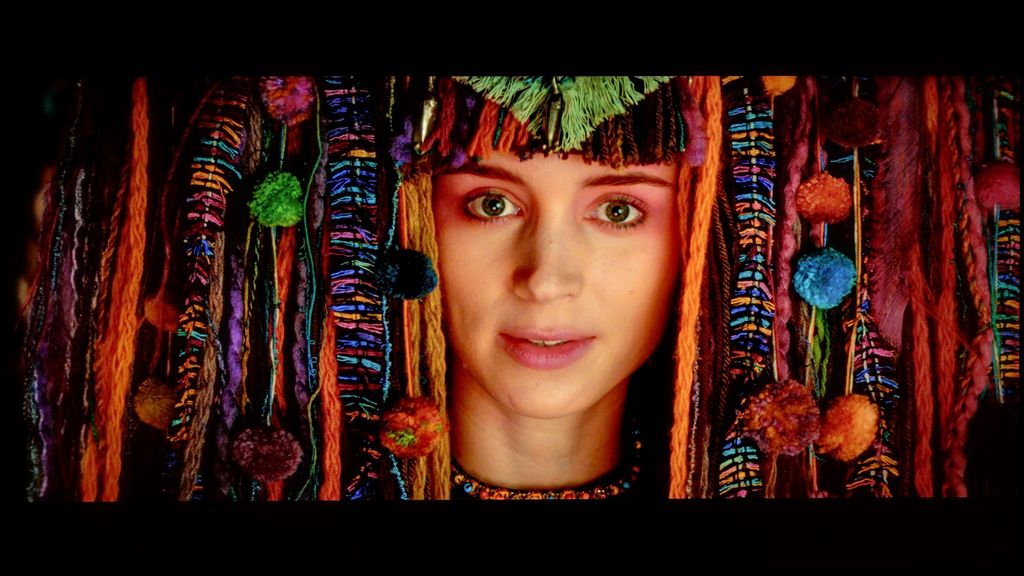
PANASONIC Z95B - Smoothness of tonal transitions
7.8/10
Posterisation, or the banding of colours, was the Achilles' heel of Panasonic's flagship model, the Z95A, last year. In the new Z95B, it is clear that the manufacturer has made an effort to improve the gradation issue, and the problem has been largely corrected. In most scenes, colour banding is no longer noticeable, and tonal transitions are smooth and look natural. However, this does not mean that the problem has completely disappeared. In extremely challenging sequences, especially in very dark scenes like those from the film Green Knight, certain imperfections can still be observed. Nevertheless, it is gratifying that Panasonic has approached the issue seriously and has made significant progress, as the difference compared to the previous model is truly noticeable.
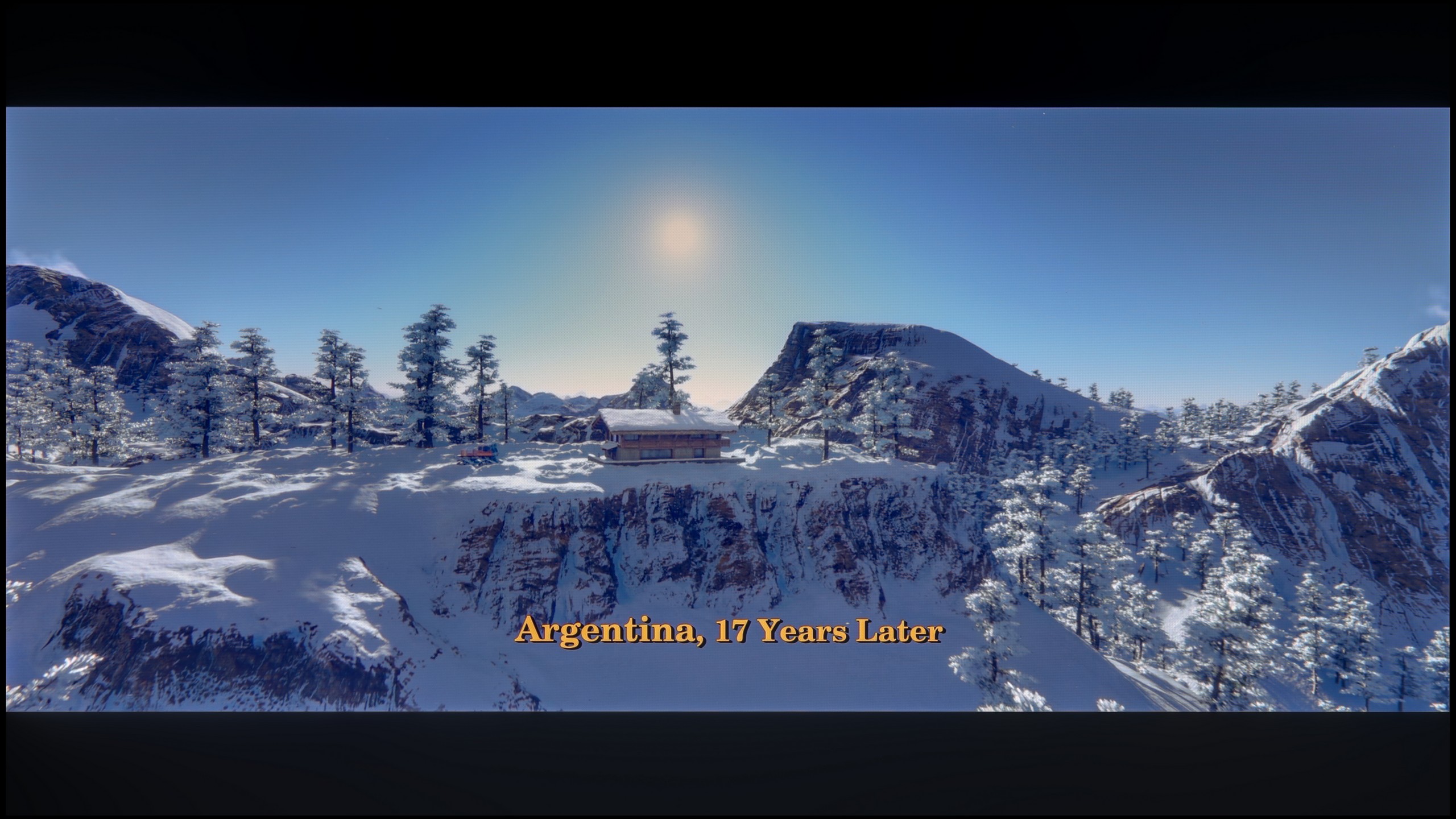

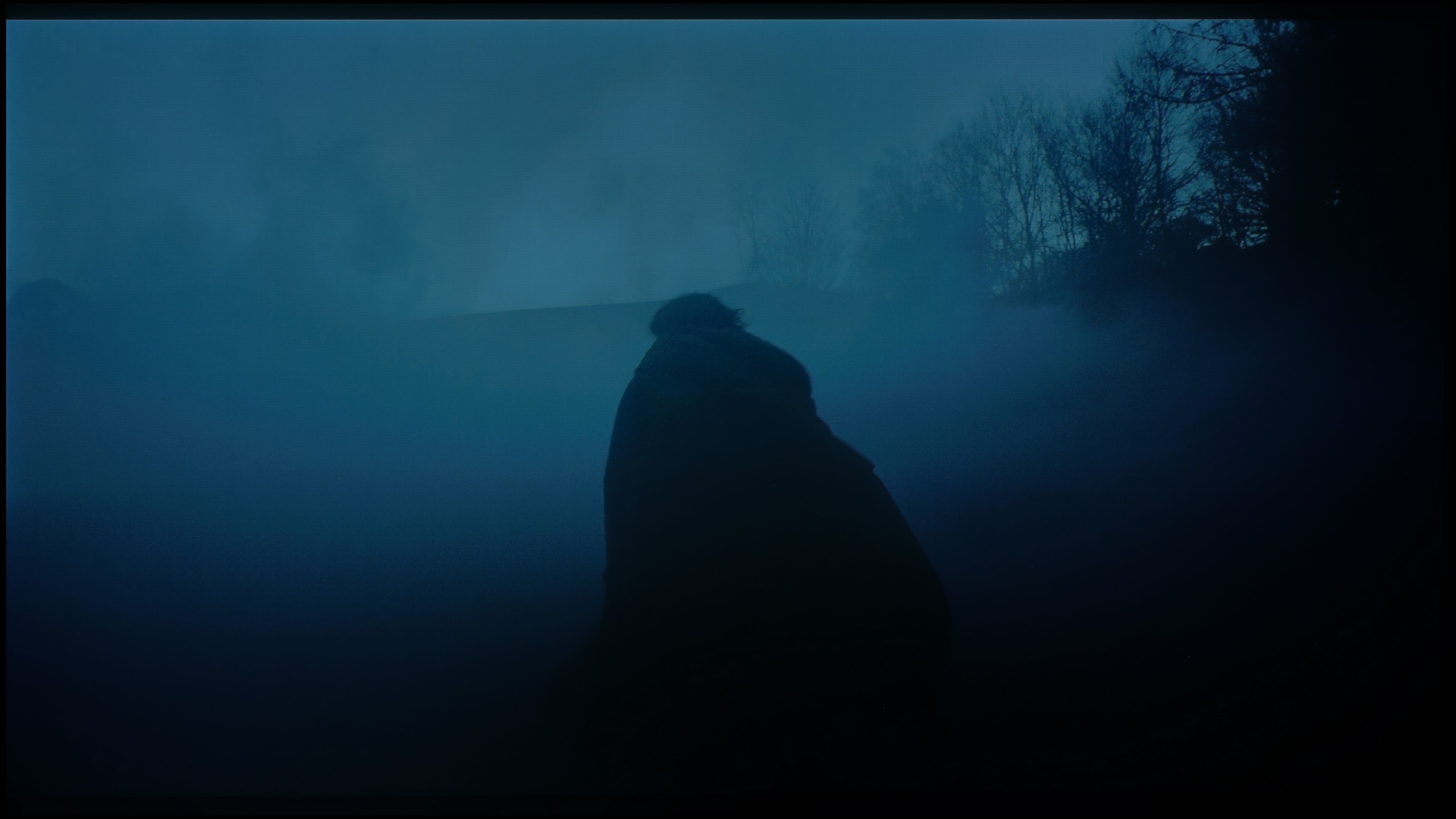
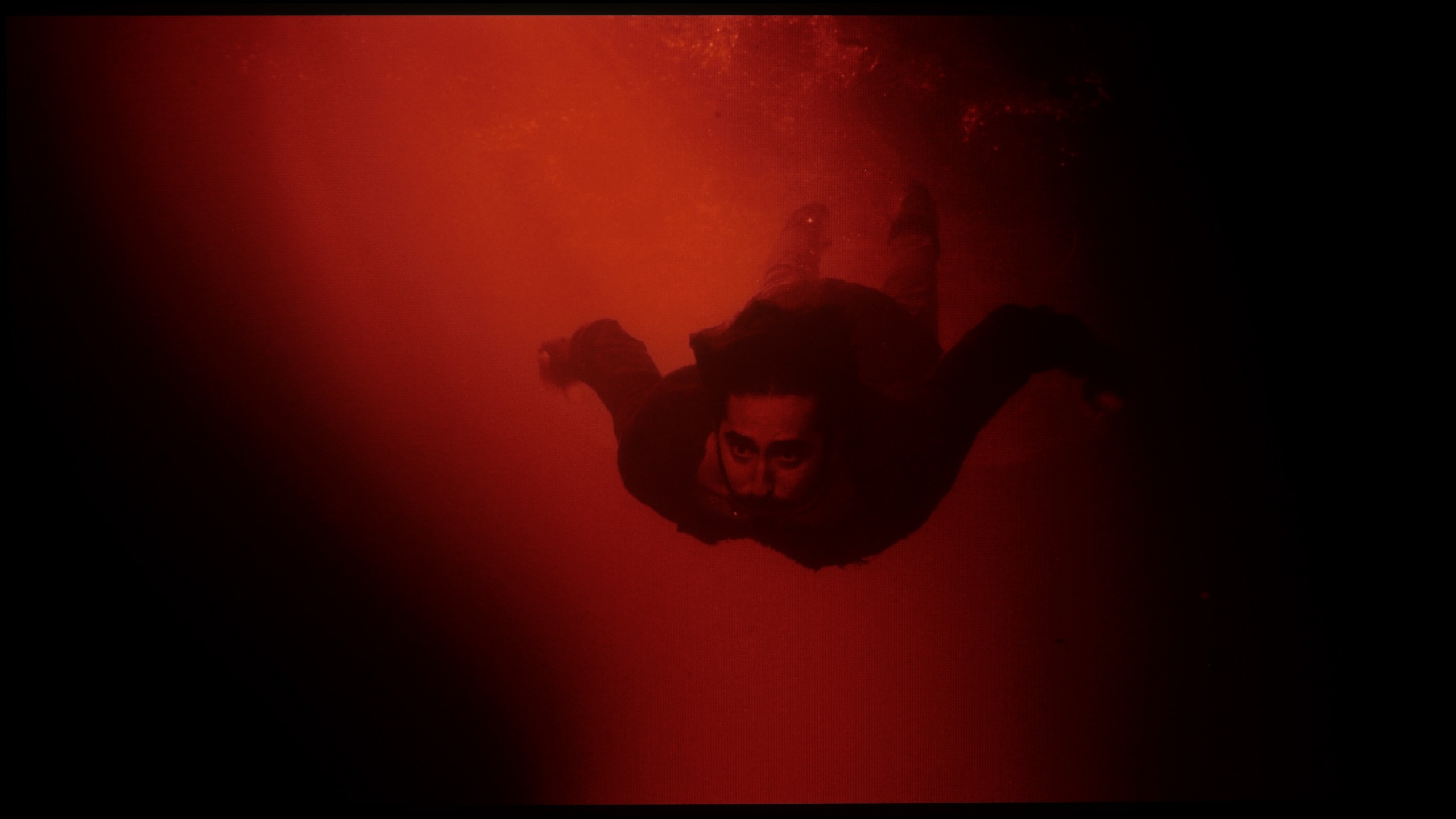




Image scaling and smoothness of tonal transitions
6/10
Smooth transition function
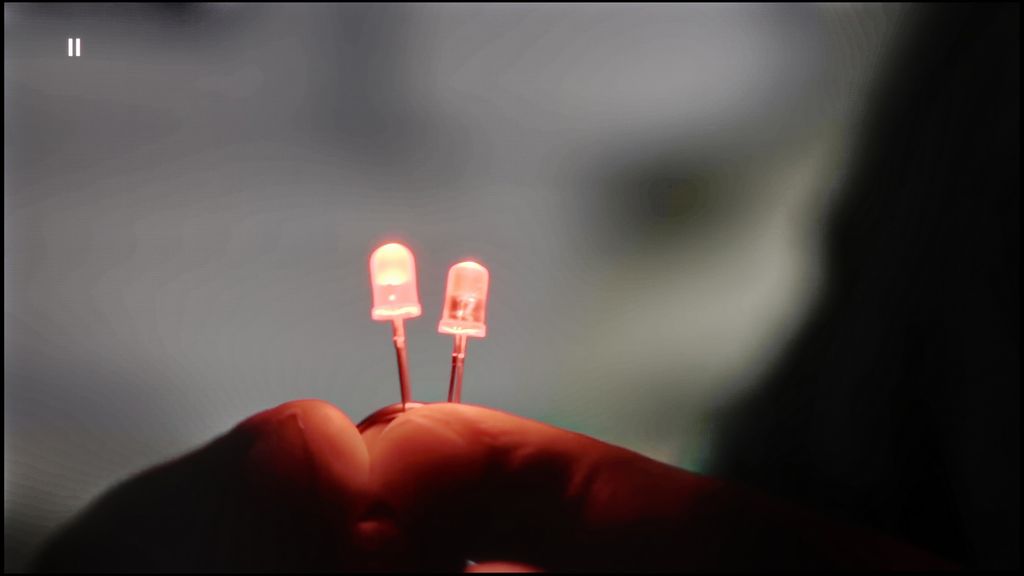
Image without overscan on the SD signal

Let’s start with what works well. The upscaling on the Z95B is at a very high level – the picture in lower resolutions is clear and sharp, and the only minor drawbacks are subtle aliasing in certain areas of the image. It’s also important that the television does not crop the material in any way and maintains its proportions, which is not always an obvious fact even in 2025.
The situation with digital processing is less impressive. Features such as “gradation smoothing” or “block noise reduction” practically do not work – the material tested looked identical regardless of the settings. We might as well state that this feature simply does not exist. This is somewhat disappointing, especially since Panasonic heavily promotes its HCX Pro AI II processor, boasting the presence of artificial intelligence to enhance picture quality. Meanwhile, in such a basic area, the television does not provide a real effect and it appears weaker than one might expect from high-end equipment.
PANASONIC Z95B - Blur and motion smoothness
8.5/10
Maximum refresh rate of the panel: 144Hz
Film motion smoothing option: Yes
Blur reduction option: Yes
BFI function 60Hz: Yes, 60Hz (image flickers)
BFI function 120Hz: No
Brightness drop with BFI: 37%
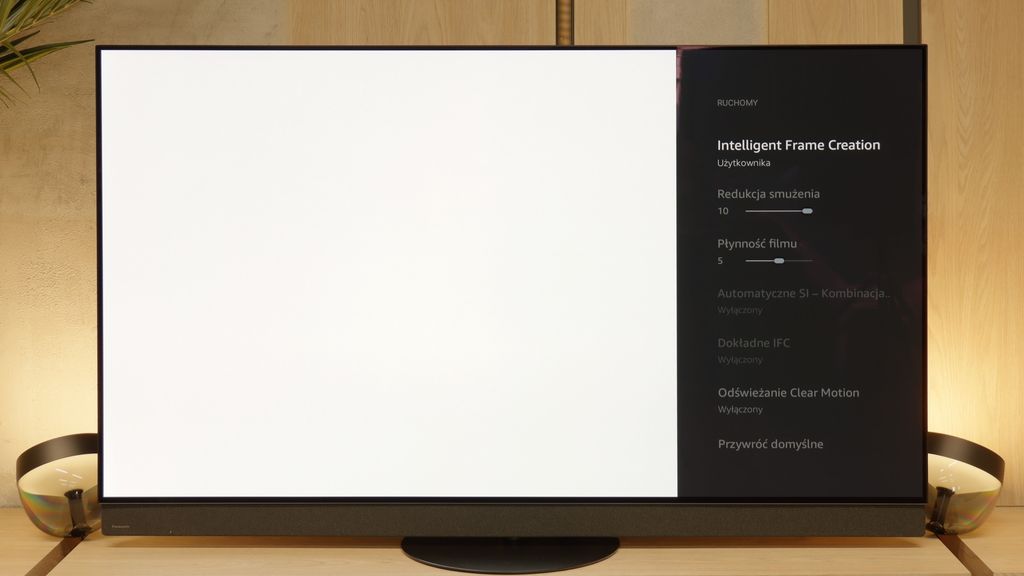
The OLED matrix with a very high refresh rate already provides an extremely sharp image even in dynamic sports scenes, such as football or basketball matches, and the Z95B is no exception. It is also very important that the television is equipped with an proprietary motion smoothing system called “Intelligent Frame Creation”. Among the available sliders, the most important one is the one named “film smoothness”, as it allows you to adjust motion to your own preferences when watching 24-frame materials, i.e. films – from a more “frame-like” appearance to a smooth, almost theatrical effect. It is somewhat disappointing that Panasonic did not choose to overclock the latest OLED matrix to 165 Hz, as Samsung did with the S95F or LG with the G5, because we know that the panel is technically capable of it. On the other hand, this is mainly an advantage for PC gamers, so in everyday viewing, it is not a significant drawback since we are limited to 120Hz.
Blur (native resolution, maximum refresh rate):



Blur (BFI function enabled):
Image flickers in this mode



Smużenie (4K@144Hz):



When it comes to trailing, there's no need to elaborate – thanks to the OLED panel, the pixel response time is extremely low. There's no question of any blurring or trails, and the displayed image remains sharp even during the fastest camera movements. This is one of the reasons why the Z95B is such a pleasure to watch, regardless of the type of content.
PANASONIC Z95B - Console compatibility and gaming features
10/10
ALLM: Yes
VRR: Yes
VRR range: 40 - 144Hz
Dolby Vision Game Mode: Yes
Correct implementation of HGIG: Yes
1080p@120Hz: Yes
1440p@120Hz: Yes
4K@120Hz: Yes
Game bar: Yes
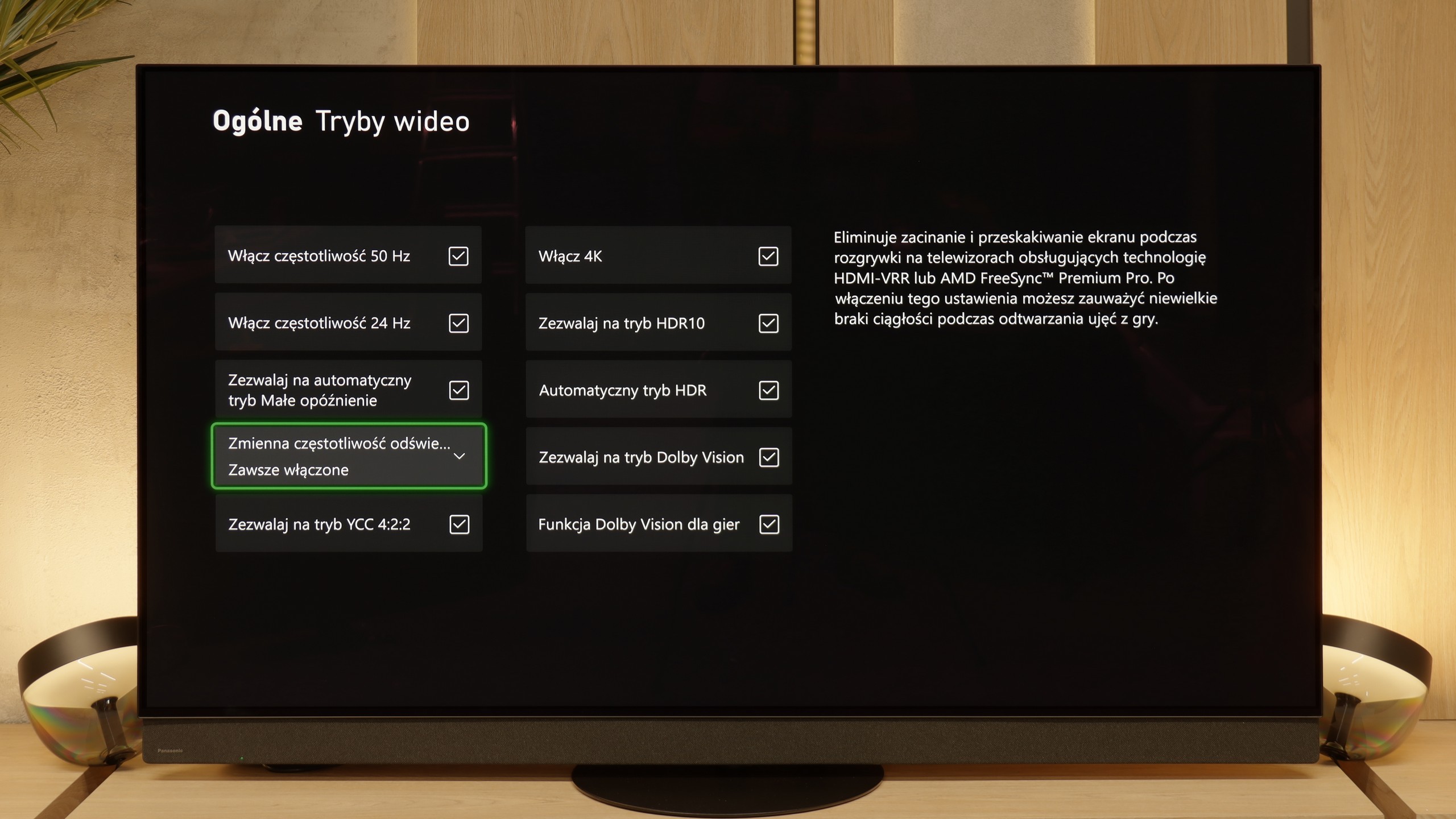
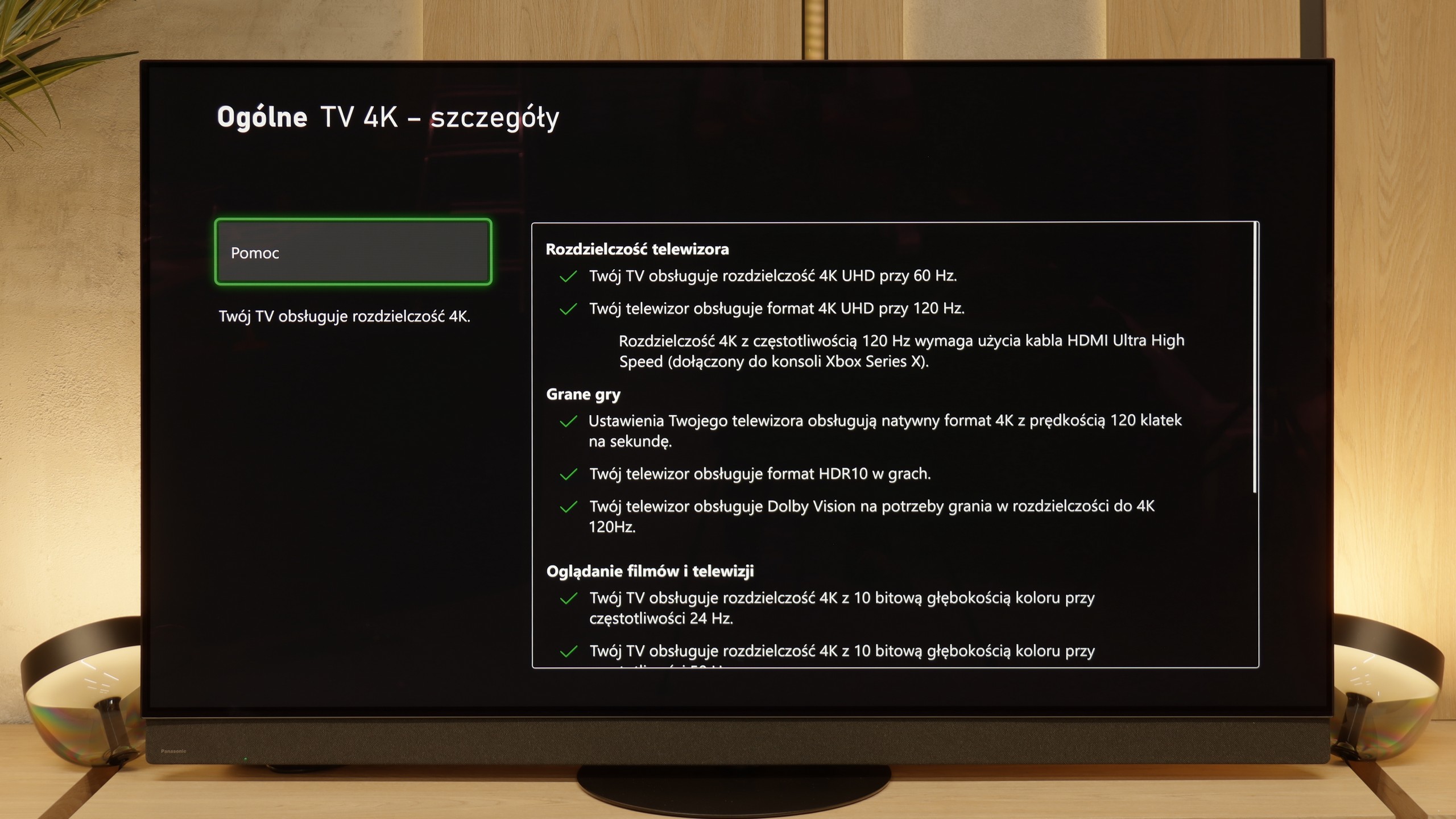
The Panasonic Z95B is fully equipped for gaming. Two HDMI 2.1 ports with full bandwidth of 48 Gb/s guarantee support for everything you would expect from a modern screen. There is VRR frame synchronization, an automatic ALLM game mode, and full compatibility with HDR formats used in games. The television supports both Dolby Vision for Xbox and the popular HGiG, which has been implemented correctly in this case, so it actually works as it should.
Although the brand is mainly associated with home cinema and equipment for filmmakers, there is also room here for features for gamers. On board, there is a Game Bar (or rather Game Circles) – visually, it looks a bit unusual, but it serves its purpose and allows you to quickly check the most important picture parameters. The only thing that is actually missing for complete happiness is having four HDMI 2.1 ports instead of two. It's a minor detail, but in a television of this class, one could expect a full set.
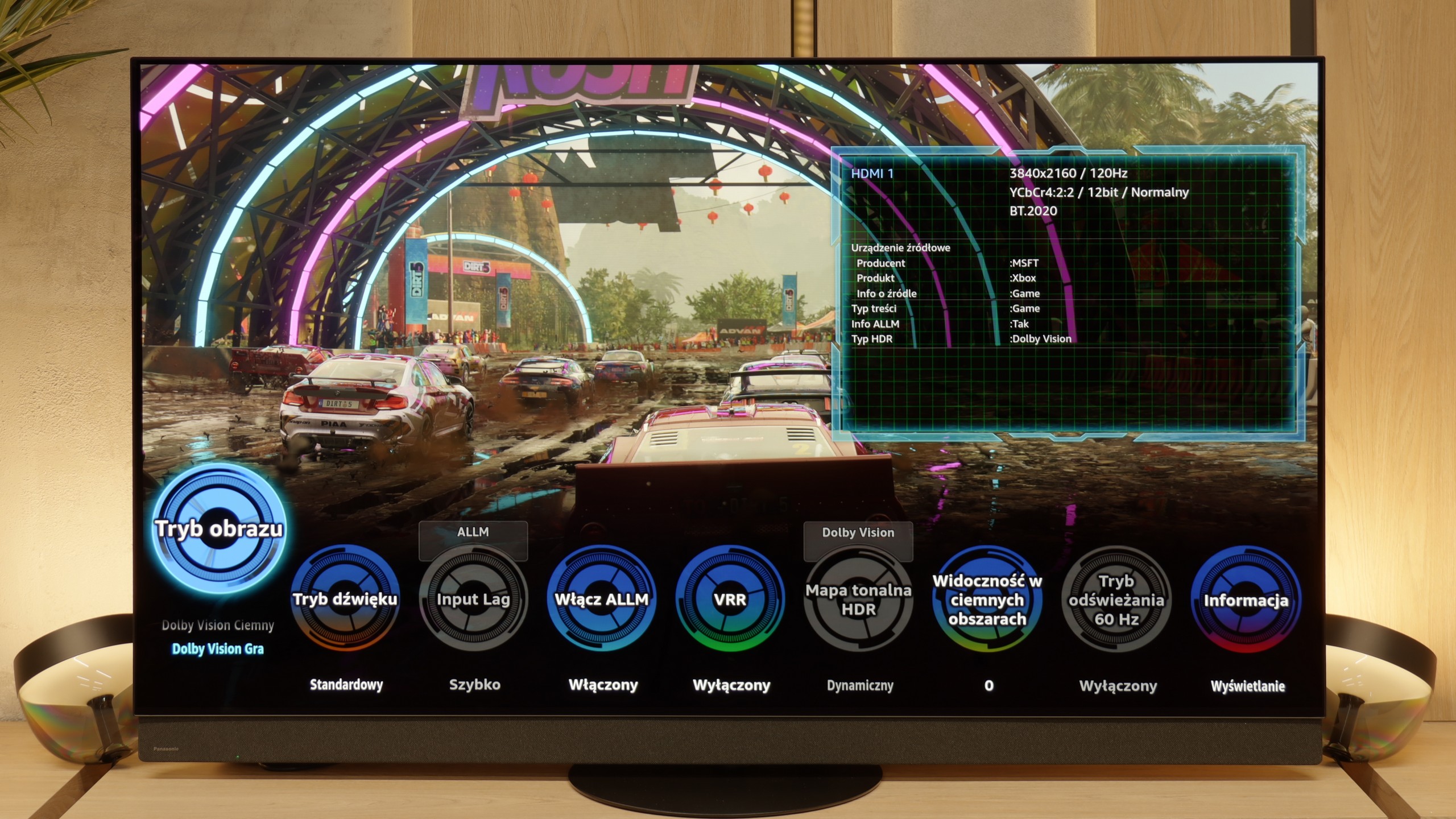
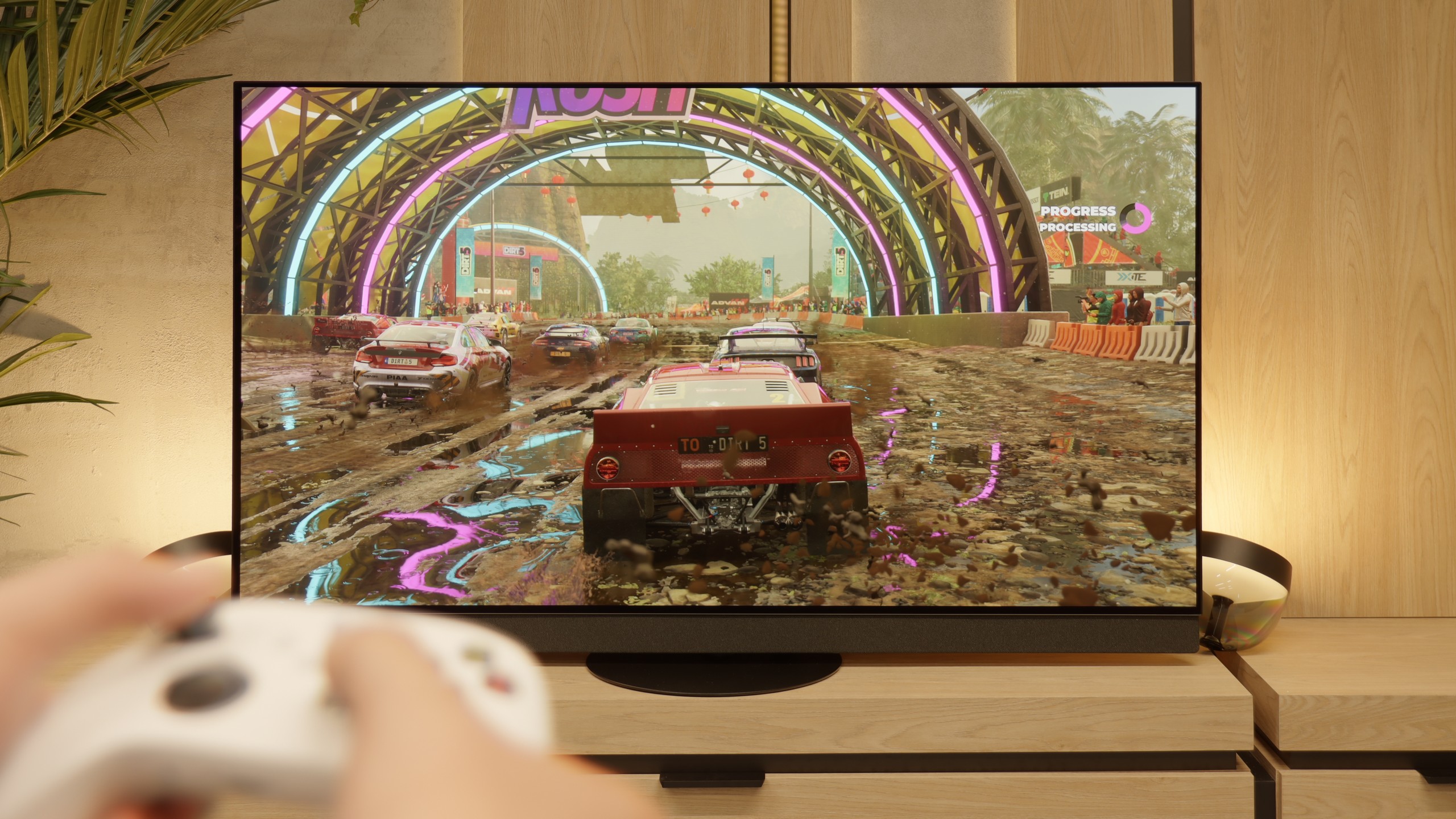

PANASONIC Z95B - Input lag
10/10
Regardless of the content being watched, the input lag on the Z95B is extraordinarily low – even in Dolby Vision, the television operates at 120 Hz with a delay of less than 5 ms. This is a result that places it among the very best screens for gaming. If we could, we would easily give it a rating of 11/10. 😉
| SDR | HDR | Dolby Vision |
|---|---|---|
| 1080p60: 13 ms | 2160p60: 13 ms | 2160p60 DV: 13 ms |
| 1080p120: 5 ms | 2160p120: 5 ms | 2160p120 DV: 5 ms |
| 2160p60: 13 ms | ||
| 2160p120: 5 ms |

PANASONIC Z95B - Compatibility with PC
8.6/10
Chroma 444 (maximum resolution and refresh rate): Yes
Font clarity: Good
Readability of dark text and shapes: Very Good
Input lag in PC mode (4K, maximum refresh rate): 5ms
Matrix subpixel arrangement: BWRG
Max refresh rate: 144Hz
G-Sync: Yes
The Z95B can be easily connected to a computer and used as a large monitor. Indeed, the WOLED pixel arrangement means that text does not look as perfectly sharp as on typical monitors, such as those with IPS panels, and this can be noticeable during office work, but it's hard to consider it a serious issue. After all, not many people buy such a television for Excel. 😉 As for gaming on PC, there is nothing to complain about here. The 144 Hz mode works perfectly, and we also have full support for G-Sync and AMD FreeSync, so frame synchronization works flawlessly with any graphics card. Despite some minor issues with text display, it's hard to say that the Z95B can't handle this role – as a gaming screen, it performs simply phenomenally.
PANASONIC Z95B - Viewing angles
8/10
Brightness drop at an angle of 45 degrees: 11%
In this respect, the Z95B performs really well. The drop in brightness at an angle is only 11 percent, which is exactly the same as the best QD-OLED panels and the previous generation of MLA from LG Display. This means that even when watching the television from the side, there is no impression that the image becomes faded or difficult to read.
Colours do indeed slightly fade at extreme angles and are not as stable as in QD-OLEDs, but it's hard to consider this a serious issue. The image still looks great, and you can be confident that when watching the Z95B at a large angle, everything will remain clear. It's also worth mentioning the swivel base in terms of viewing angles, as it is a practical solution that allows you to easily position the screen so that everyone in the room has the best possible view.
PANASONIC Z95B - TV efficiency during daytime
7.4/10
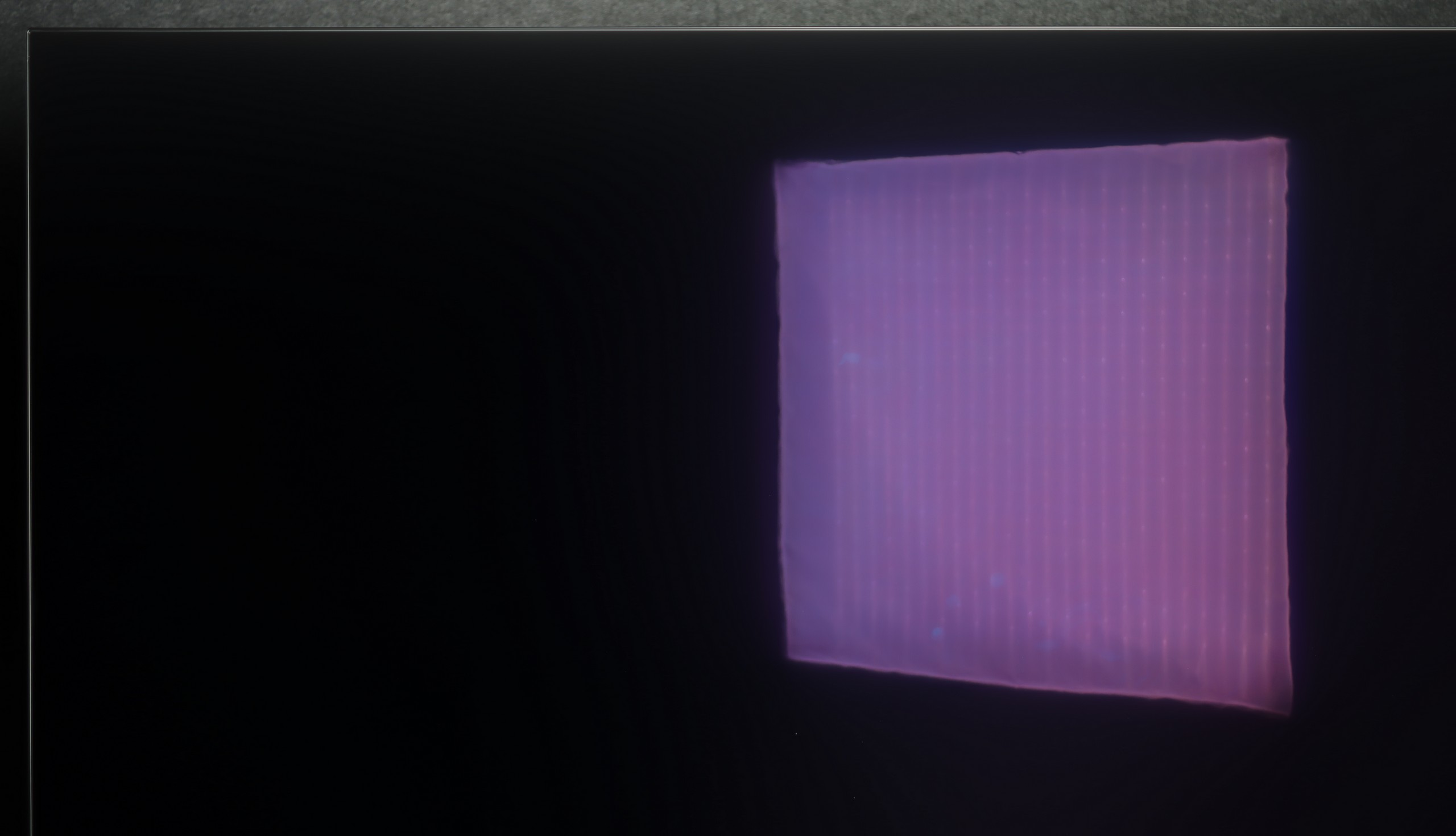
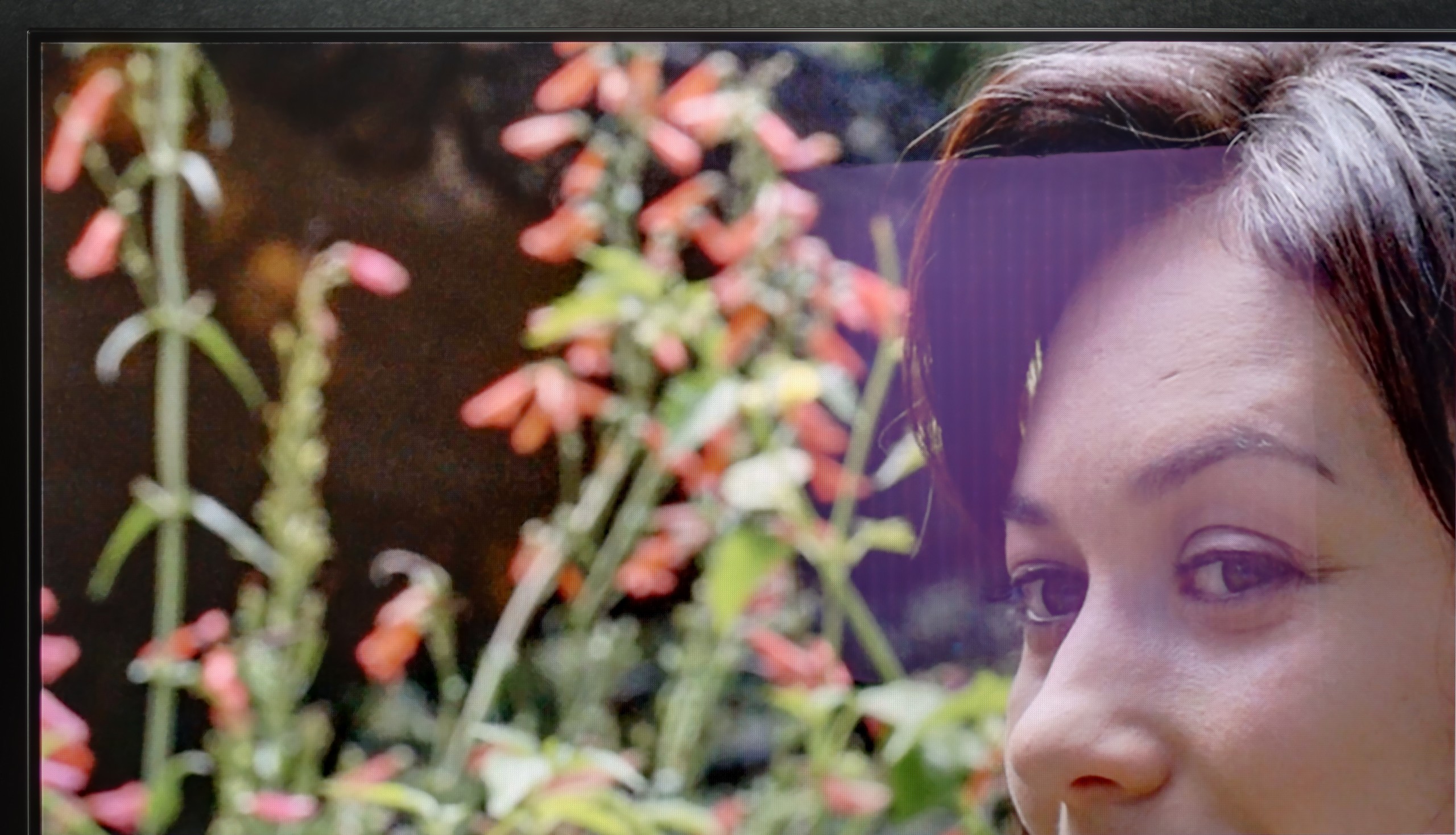
Matrix coating: Glare
Reflection suppression: Decent
Black levels during daytime: Very Good
The year 2025 is the moment when it can confidently be said that OLEDs are suitable for viewing even in heavily sunlit rooms. The new generation of WOLED panels, used in the Z95B, can achieve truly high brightness – the average value for the Z95B in SDR mode is as much as 623 nits. This is a result that just a few years ago was beyond the reach of this technology. Of course, it is not at the level of the best LCD televisions designed for bright living rooms, and the matrix itself, glossy with a slight filter, struggles somewhat with suppressing reflections. Nevertheless, it is hard to have major objections. The Z95B can easily handle most daytime conditions, and you can comfortably watch television or films even when a lot of light is coming into the room.
Matrix brightness
Average luminance SDR
Panasonic Z95B: 623 cd/m2
PANASONIC Z95B - TV features
6.8/10
System: Amazon FireTV
System performance: Average
- HDMI inputs: 2 x HDMI 2.0, 2 x HDMI 2.1 48Gbps
- Outputs: Toslink (Optical audio), eARC (HDMI), ARC (HDMI), Mini-Jack (Headphones)
- Network Interfaces: Wi-Fi 2.4GHz, Wi-Fi 5GHz, Ethernet (LAN) 100Mbps
- TV reception: DVB-T, DVB-T2, DVB-S, DVB-S2, DVB-C
Classic features:
Recording to USB (terrestrial TV): Yes
Recording programming: No
Picture in Picture (PiP): No
RF remote control (no need to aim at the screen): RF
Backlit remote control: No
Teletext: Yes
Audio only mode: Yes
Bluetooth headphones support: Yes
Simultaneous Bluetooth headphones & TV audio: Yes
Smart features:
AirPlay: Yes
Screen mirroring (Windows Miracast): Yes
Voice search: Yes
Voice search in native language: No
Ability to connect a keyboard and mouse: Yes






Smart TV: Amazon FireTV
Panasonic in the Z95B uses the Fire TV system, which is a platform created by Amazon. This is quite a change, as just two years ago the company was relying on its own system based on Linux. At first glance, everything looks good – the interface is clear, and the operation is quite simple. Additionally, we have AirPlay, which allows you to stream photos or videos from an iPhone, as well as screen mirroring from both Windows and Android phones. The television also works with the Amazon Alexa voice assistant, but here a significant limitation quickly arises. In practice, only a few of the most popular languages work well, such as English, while Polish is still not available, and it is unclear when it will be.
Classic Features
Here the situation becomes at least odd. During testing in the editorial office, the television would not search for any channels – neither satellite nor terrestrial. As a result, we could not check the operation of the PiP function or the tuner itself. The only certain thing is the recording to USB, as the television immediately asked if we wanted to format it for that purpose upon connecting the pendrive. The remote control looks fairly classic – it is large, with a full numeric keypad, and the advantage is that you do not have to aim at the screen, as it works on RF technology.
Problems in Daily Use
The biggest disappointment, however, arises with the apps and system stability. Some apps are not available at all in Poland, others can be found but cannot be downloaded as they are tied to a specific market. Additionally, there are odd bugs, untranslated menu elements, and occasional "hangs" that can effectively detract from the enjoyment of using such a good screen as the Z95B. One could say that while the Z95B impresses with image quality as a "monitor", as a smart television it can be simply frustrating and falls short in many aspects.
Sound connection options
HDMI audio:
Other audio outputs:
Toslink: Yes
Stereo (Mini-Jack): Yes
Wireless audio:
Bluetooth: Yes
Obsługiwane formaty audio:
Dolby Digital Plus 7.1: Yes
Dolby True HD 7.1: No
Dolby Atmos in Dolby Digital Plus (JOC): Yes
Dolby Atmos in Dolby True HD: No
DTS:X in DTS-HD MA: No
DTS-HD Master Audio: No
Ułatwienia dla seniorów
Numeric keyboard on TV: Yes
Font size adjustment: No
Audio description: Yes
PANASONIC Z95B - Apps
7.2/10























PANASONIC Z95B - Playing files from USB
3.5/10

| Maximum photo resolution: | Supported photo formats: |
|---|---|
Here we also encountered another limitation of the Fire TV system. The built-in player handles popular audio and video files without any problems, so at first glance, everything seems fine. However, the problem arises when we want to enable subtitles in films. We were unable to activate any format – neither .srt, nor .sub, nor .txt. Regardless of the settings, the subtitles simply did not appear. So, if you have a film with a separate subtitle file, you are forced to watch it in the original language, unless the subtitles were permanently embedded in the picture. For a television of this class, it is quite a disappointment and further evidence that Fire TV still has a lot of shortcomings that can spoil the joy of use.
PANASONIC Z95B - Sound
8.9/10
91dB
Maximum volume
Supported codecs
(TV speakers)
Dolby Digital Plus 7.1
Dolby True HD 7.1
Dolby Atmos in Dolby Digital Plus (JOC)
Dolby Atmos in Dolby True HD
DTS:X in DTS-HD MA
DTS-HD Master Audio
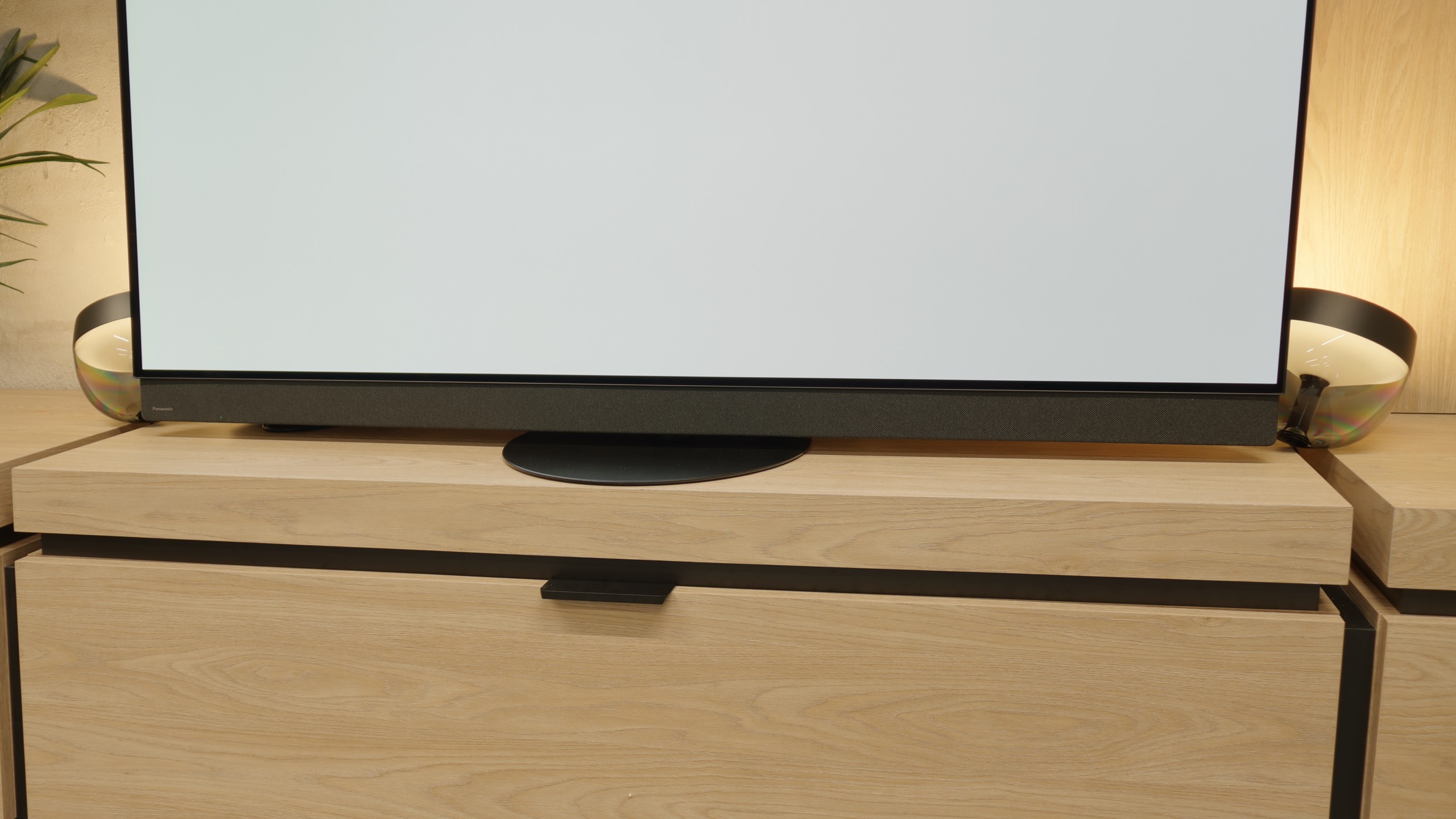
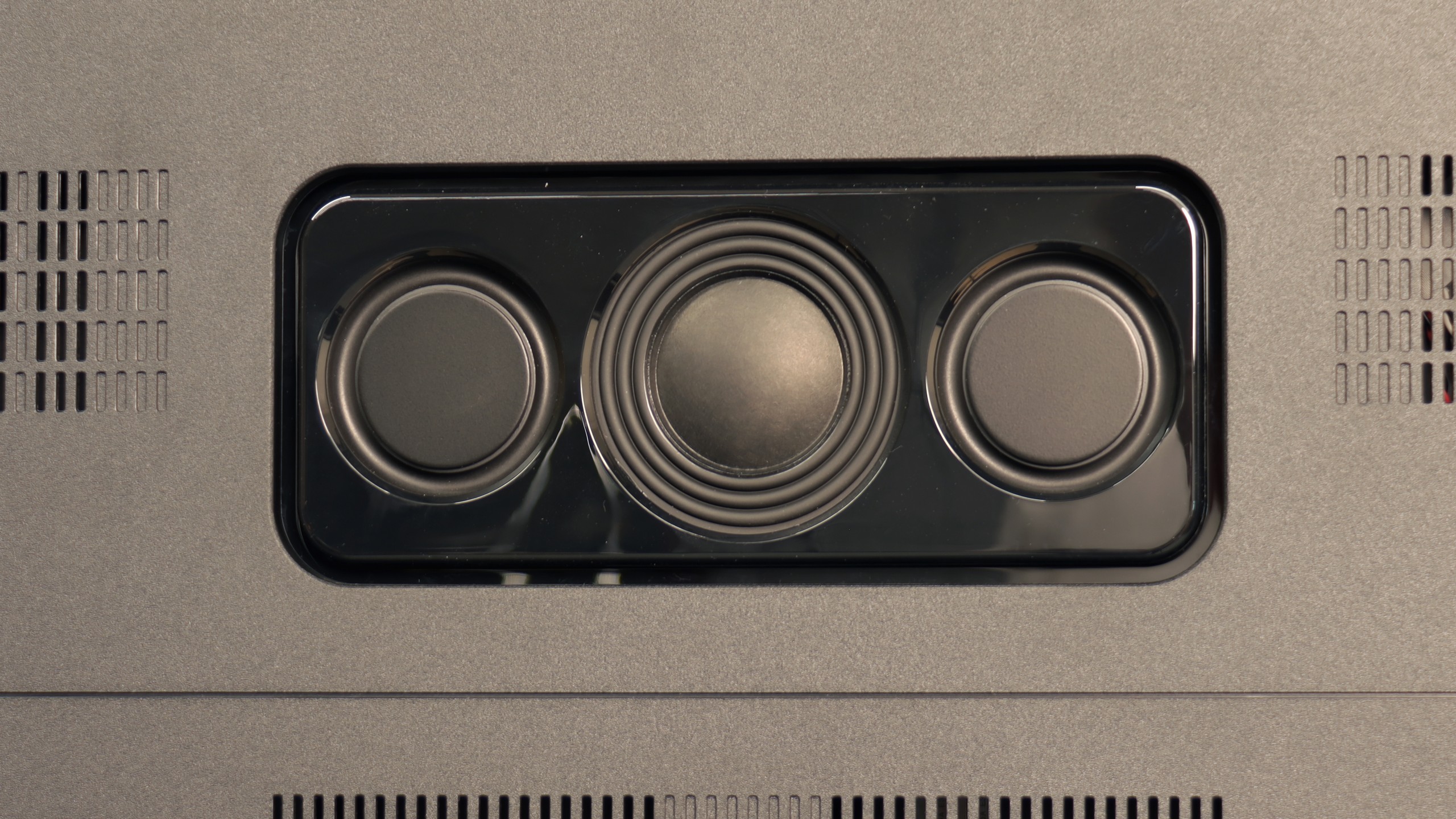
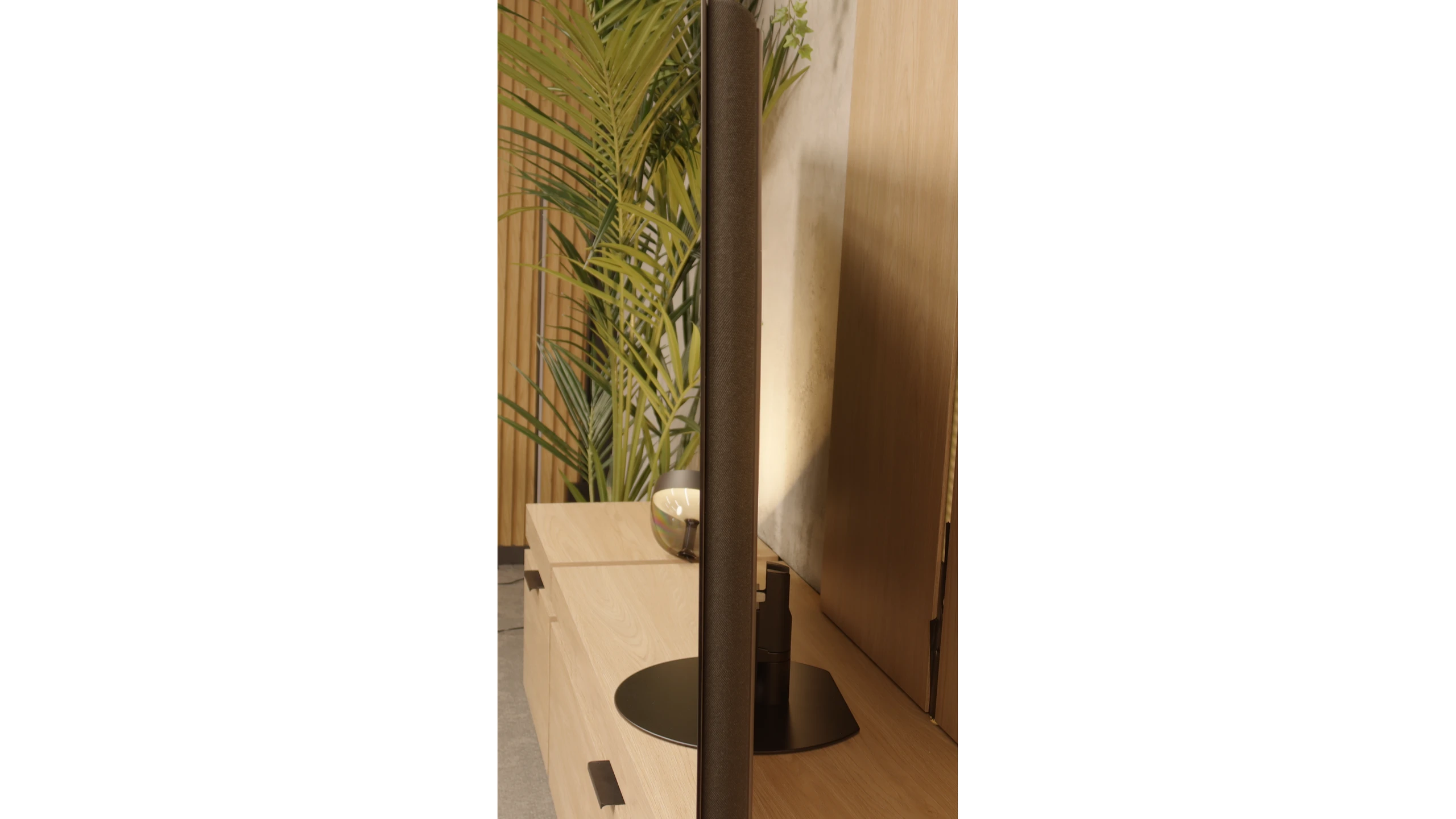
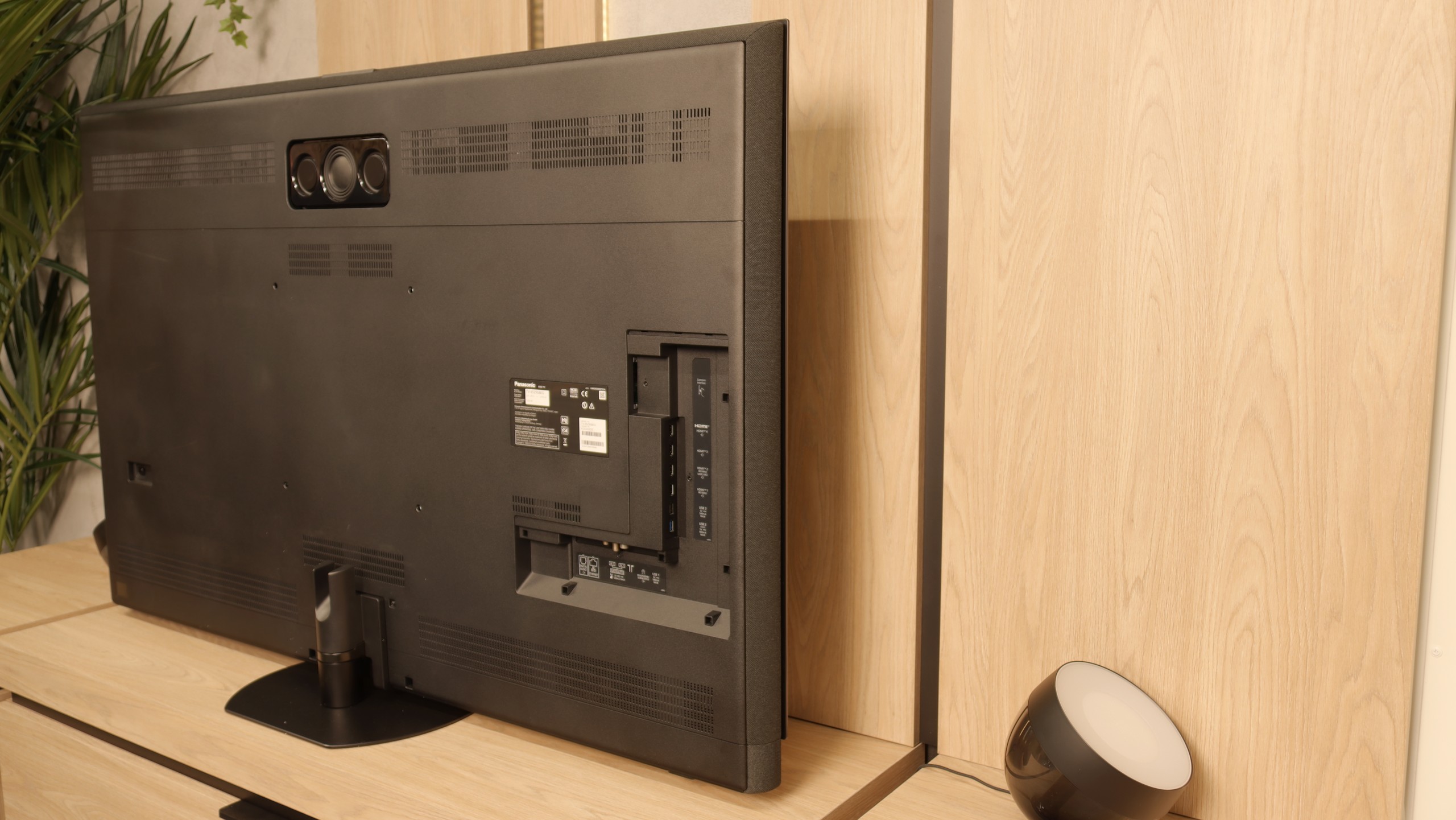




The built-in audio system in the Panasonic Z95B really makes an impression. The manufacturer has added an additional soundbar here, which completely changes the sound experience of the television – this time it can confidently be said that there is no need for any external equipment to enjoy full and dynamic sound. The bass is clear and surprisingly powerful, dialogues remain intelligible even during louder action scenes, and the television itself can play quite loudly, reaching levels of up to 91 decibels. It should also be noted that it fully supports Dolby Atmos, so if you use films or streaming services that support this format, you can count on spacious and impressive sound. A certain limitation is the lack of support for DTS:X – if someone plans to connect a home cinema or Blu-ray player with this standard, they must take into account that the television will not play it, but this shouldn't be a major drawback considering how all manufacturers approach this standard. I suppose we have to come to terms with this.
Acoustic Measurements
91dBC (Max)
75dBC
PANASONIC Z95B - Details about the matrix
Software version during testing: Fire OS 8.1.4.1 (RS8141/3009)
Subpixel Structure:
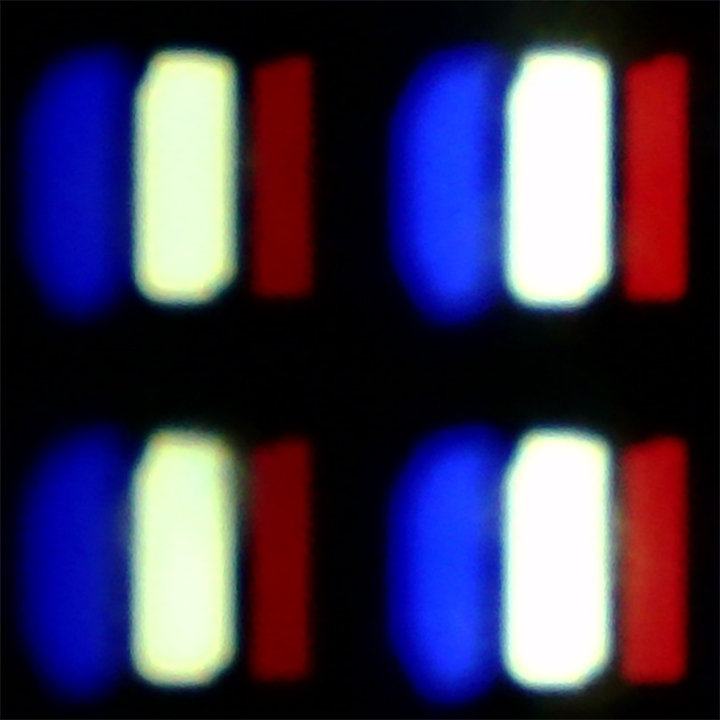
Panel uniformity and thermal imaging:

Founder and originator of the "ChooseTV" portal

Journalist, reviewer, and columnist for the "ChooseTV" portal




